By Eric Niderost
In the early 13th century the legendary Mongol Genghis Khan laid the foundations for the greatest land empire in history. At its height, circa 1250, it stretched from China to the fringes of Poland and Austria in Europe, a total of roughly 12 million square miles. The Mongols were essentially Asiatic nomads who became masters of the battlefield with their two assets: swift horses, which they rode as if born in the saddle, and composite bows. Few could withstand the deadly showers of arrows unleashed by these rampaging horsemen.
But it was inevitable that the empire would break apart. In 1260 Kublai, one of Genghis’s grandsons, engineered a khurltai—an assembly of Mongol warriors—who proclaimed him rightful successor to his dead brother, Monke. Not all Mongols agreed with this decision, and the empire eventually broke apart into four different segments.
That was quite alright with Kublai; he wasn’t that interested in Russia, Iran, or some of the more distant conquered lands of the far-flung Mongol realm. He was content to take what to him was the lion’s share: China. Kublai Khan was a remarkable man in many ways. He seems to have genuinely appreciated the great accomplishments of Chinese civilization and wanted to be a part of it. He created two splendid capitals: Datu (now Beijing) and Shangdu. Shangdu is immortalized as Xanadu in Samuel Taylor Coleridge’s poem.
This refined civilization of China required a change in lifestyle and attitude. Traditionally, Mongols were nomads of the grassy steppes, living in mobile yurt dwellings, tending herds, and living on cheese, mare’s milk, and kumiss (fermented mare’s milk). By contrast, Kublai transformed himself into a Chinese emperor, formally establishing the Yuan Dynasty (Great Originator) in the time-honored Chinese manner.
Much of the old Chinese governmental apparatus was maintained with Mongol supervision, and Chinese Confucian ceremonies and rites were scrupulously performed. But Kublai was still a Mongol at heart, and the Chinese remained a conquered and therefore, in Mongol eyes, an inferior people. The Great Khan, as Kublai came to be called, did not trust the Chinese, so he employed many foreigners. One of them was a young Venetian named Marco Polo.
Empires based on military conquest continually expand. Once the forward motion ceases, decay and decline are almost inevitable. This is what happened to the Roman Empire, but there were traits within Mongol culture that made perpetual conquest a necessity. Traditionally, Mongol tribes gave complete obedience to a leader only in time of war. A khan’s prestige also depended on his successes in defeating enemies.
Kublai was not about to lose face anytime soon. Even as he established himself as emperor, most of southern China remained under the rule of the Southern Song, a native Chinese dynasty. That meant, of course, the Mongols had to subdue the Southern Song before they could truly claim China as their own.
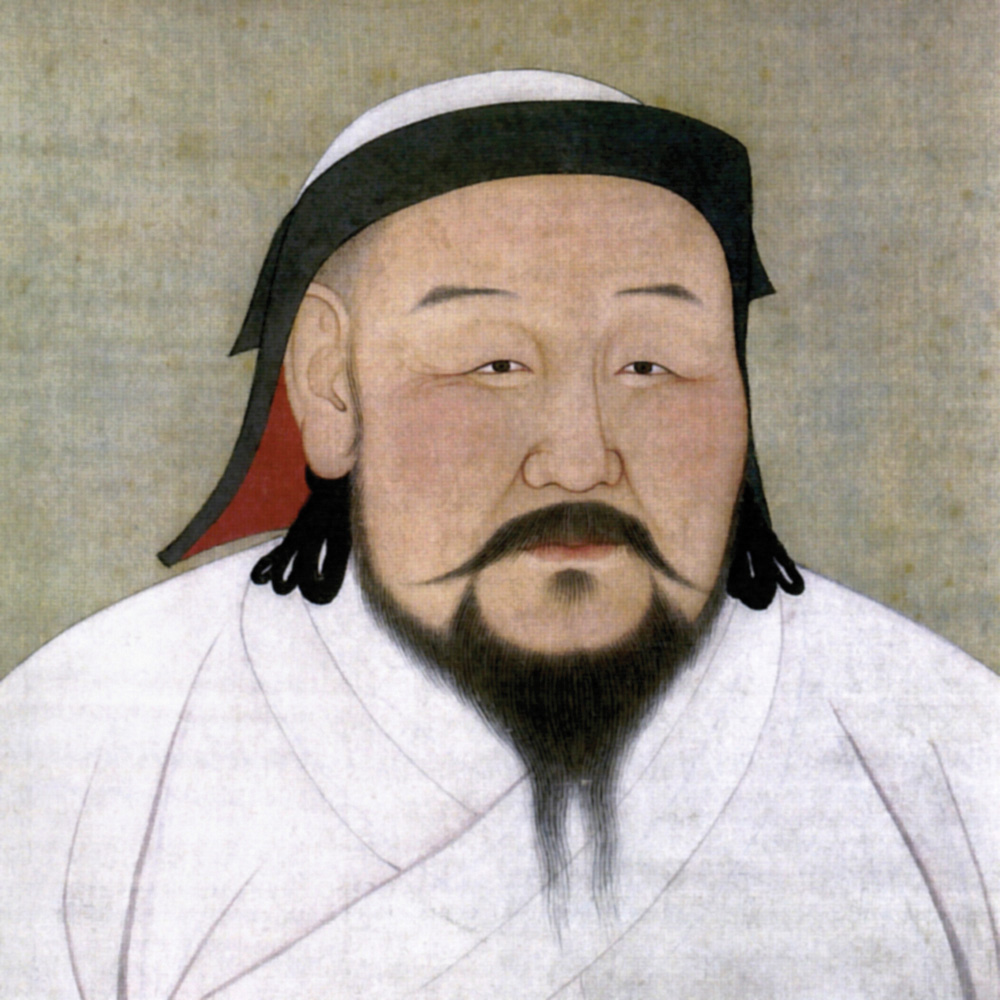
The lands south of the mighty Yangtze River proved a hard nut to crack, at least initially. They were mountainous in spots and laced by waterways, terrain hardly suited for cavalry maneuvers. The Mongols also had to take well-fortified cities such as Xiangyang. The siege of Xiangyang, lasting from 1267 to 1272, is one of the greatest of world history.
Technically, the operation was a joint siege of Xiangyang and its neighboring Fancheng, the latter just across the Han River. The two cities were the guardians of Song China because the Han River led to the Yangtze and ultimately straight into the southern heartland. The Mongols brought up traction trebuchets, but these were not as effective as they could have been, in part because the Chinese had widened the moat, and also because they had netting hung from the walls as a kind of cushion.
Kublai, becoming impatient after several years of little real progress, sent for some Persian engineers. They brought in some trebuchets that were capable of hurling stones of enormous weight and size. These were the machines that would turn the tide in the Mongols’ favor.
The Chinese citizens of Xiangyang were terrified of the new weapons, which they dubbed hui hui pao, akin to Moslem trebuchets. The walls were battered into rubble, and if the Mongols had launched an all-out attack all the inhabitants would have been put to the sword, regardless of age or sex. Lu Wenhuan, the garrison commander, had no choice but to surrender. Xiangyang had finally fallen.
The Mongols had triumphed, but the war was not yet over. Sporadic fighting continued for several years, but it was clear the Southern Song were doomed. Ever eager for fresh conquests, Kublai Khan turned his attention to Japan, those islands to the east of his domains. The Mongols had already conquered Koryo (Korea) and transformed it into a vassal state. This was important because the Koreans had something that the Mongols sorely lacked, a seafaring tradition.
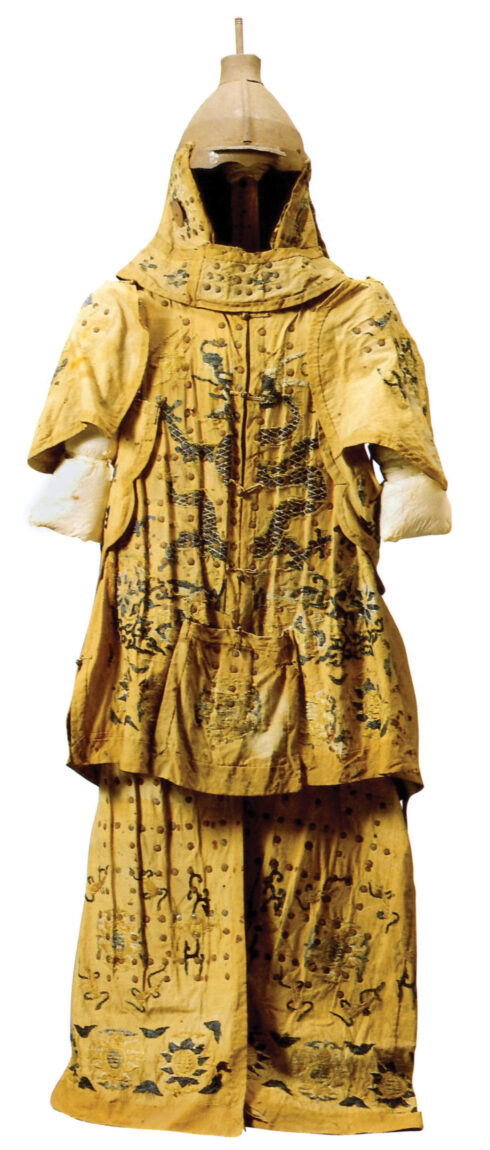
The Japanese were somewhat aloof but did have trade and cultural links to other parts of Asia, particularly Song China. Zen Buddhism was a favorite with Japanese rulers, and Chinese Buddhist priests found refuge in Japan in the wake of the Mongol invasions of their homeland. It was well known that Japan was a source for gold, which must have whetted Kublai Khan’s appetite for conquest.
“[The] people on the island of Zipangu (Japan) have measureless quantities of gold,” wrote Marco Polo. “The King’s palace is roofed with pure gold.” Gold probably was one of the major reasons for a Mongol invasion, but it does not tell the whole story. Spurred by the sheer momentum of conquest and the desire to include every nation in his expanding realm, Kublai had to have Japan. But wars are costly, and the Great Khan tried diplomacy first. If the Japanese had submitted, it would have saved a lot of trouble and expense.
In the mid-13th century Japan was formally ruled by an emperor who resided in Japan. At the time of the Mongol invasions, the Emperor Kameyama sat on the chrysanthemum throne. He was ritually honored, and many things were done in his name, but in reality the Japanese emperors were mere figureheads with little actual power.
The real ruler of Japan in this period was Hojo Tokimune, the shikken (regent) of the country. He was first and foremost a warrior, a samurai, but was also interested in religion. One of his mentors was Magaku Sogen, a Zen Buddhist priest from China. He had been present when Mongols had raided his monastery. The invaders slaughtered many of the monks, decapitating them and leaving their headless bodies in spreading pools of blood.
Amid the terrible slaughter, Sogen remained calm and was actually meditating during the attack. Perhaps a little frightened by his detachment, the Mongols spared him. There is no doubt that the tales told by Sogen and other refugee monks colored the Japanese view of the Mongols.
Actually, the Great Khan sent the first embassy to Japan in 1268, before Xiangyang had fallen. This earliest contact may have been an attempt to further isolate the Song, who still had good relations with the Japanese. The envoys carried a letter from Kublai himself, who tried to be the very soul of courtesy and tact. Despite the Great Khan’s best efforts, the Japanese took the missive almost as an insult.
To begin with, the letter was addressed to the “King of Japan,” which the Japanese considered a studied insult. The Japanese emperor, according to tradition, was directly descended from Amaterasu-Omikami, the Sun Goddess. And there was irony underneath the polite and flowery phrases. Stripped of the rhetoric, Kublai was asking Japan to be a tributary state. The Japanese refused to even give a reply.
Undeterred, the Great Khan sent another mission to Japan that was similarly rebuffed. When the envoys returned to China, they took along two kidnapped Japanese. This was a bit of psychological warfare because the two captives were shown the power and splendor of the Great Khan’s court and were released to spread word of it back home.
Another diplomatic embassy was dispatched, and at one point the Japanese finally drafted a reply. In the end, though, it was not delivered. Toward the end of 1270, Kublai Khan sent Zhao Liangbi as his personal representative as a last-ditch attempt to make the Japanese see reason. Zhao had nothing but trouble on the mission and was lucky to escape alive. Briefly arrested, he was basically ignored and made to cool his heels for weeks at a time. He also returned empty handed.
Enough was enough, so Kublai set invasion preparations in motion. Originally the expedition was scheduled to set sail in the seventh lunar month of the year (our August), but there were delays. The invasion was an enormous undertaking worthy of a mighty empire. The fleet numbered 900 ships, an armada that carried perhaps 25,000 Mongol, Chinese, and Korean troops.
The fleet left Masan, a port on the southern coast of Koryo, on October 29, 1274. The fleet had a relatively short way to go; only the 120-mile Tsushima Strait separated Japan from the Korean mainland. The Korean and Chinese sailors with the fleet knew these waters well, so the expedition made steady progress. But Kublai had commanded that the Mongols take two islands, Tsushima and Iki, along the way. These would be the stepping stones of conquest, at the same time allowing the Mongols to keep their lines of communication open.
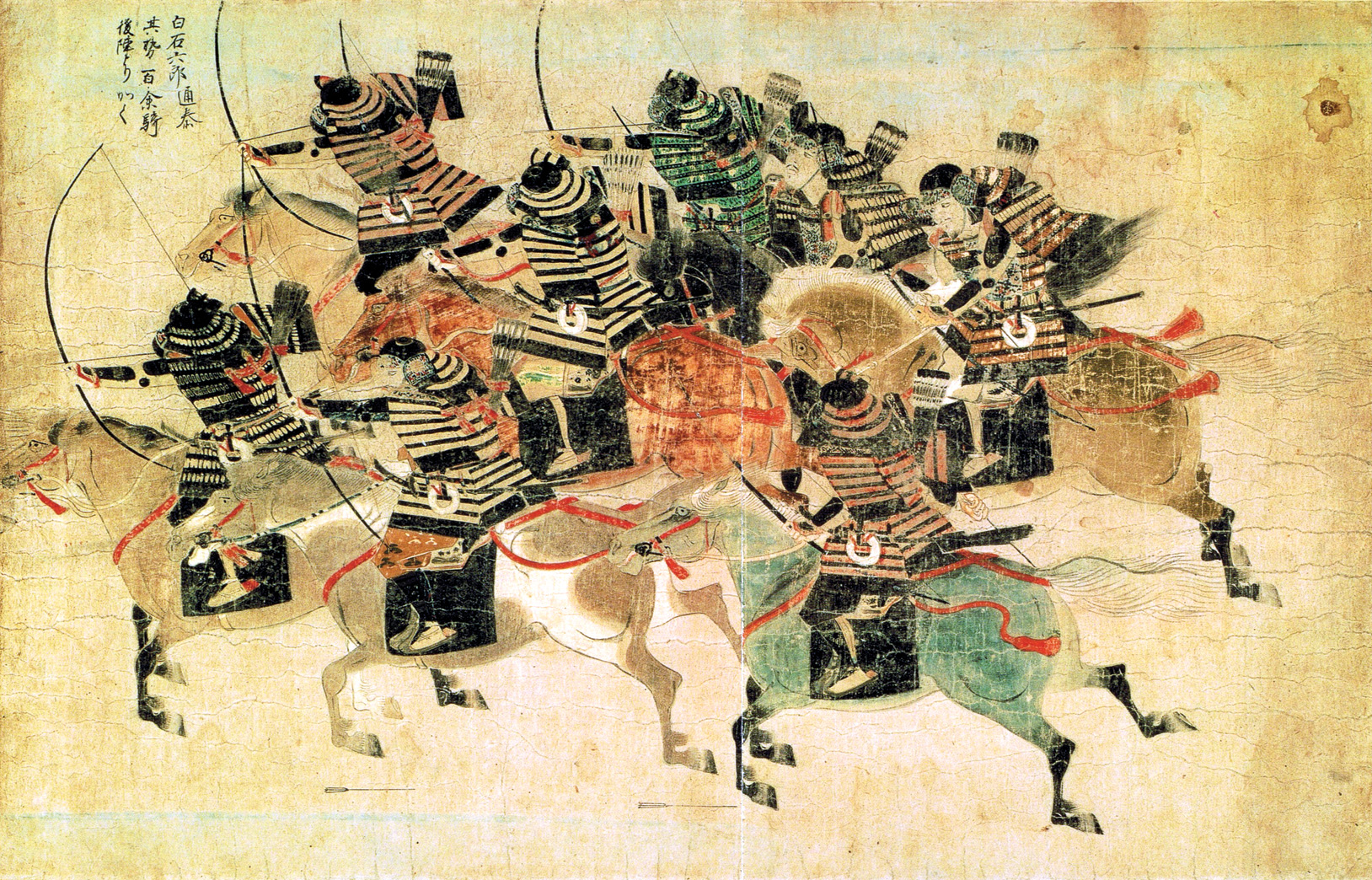
Tsushima is fairly large, about 45 miles long and 10 miles wide, though not as large as the Japanese home islands. The approaching Mongol fleet was spotted, and the jitodai (deputy governor or administrator) of Tsushima was quickly informed of the enemy’s approach. Jitodai So Sukekuni was in his 60s, a tough and experienced samurai who would do his best to defend his post. His hand was strengthened by an event that was interpreted as a sign from heaven.
Of all the kami (gods) of Japan, none was more respected than Hachiman, fearsome god of war. His shrine on Tsushima caught fire just before the Mongols landed, though the flames were extinguished before they could do much damage. Then, a flock of white doves landed on the shrine’s ample roof. Doves were considered to be the war god’s messengers. The sequence of events was seen as a warning, but not a prediction of disaster.
So Sukekuni had about 80 mounted samurai in his main force, together with some of their retainers. They galloped down to Komoda beach, a flat sandy area on Tsushima’s western side, where the Mongols were expected to land. The Japanese were not disappointed. The enemy fleet started loading troops into smaller boats, shuttling them from ship to shore in an unending flow.
The first Mongols stepped ashore about 2 am on November 5. They established a beachhead and presumably landed horses and equipment. Some evidence exists to suggest the Mongols landed some catapults or trebuchets. There probably were Mongol heavy and light cavalry and Korean and perhaps some Chinese foot soldiers. The initial landing fielded some 1,000 troops.
In this period the Japanese samurai excelled in archery, but in a highly individualistic manner. Mounted samurai would sally forth, bow in hand, looking for worthy targets. The higher the status of the target, the greater the gain in bringing him down. The Mongols and their Korean and Chinese troops cared nothing for such knightly concepts. They advanced in tightly packed, disciplined bodies and launched showers of arrows at the Japanese enemy.
The Mongol catapults or trebuchets were soon brought into action, lobbing deadly stones at the defenders. Saito Sukesada, a prominent Tsushima samurai, was knocked down and wounded by a catapult stone. Rising to his feet, he fought on, at one point killing a Mongol general. But Saito finally died, pierced by three arrows. The individualistic samurai style was ill suited to massed Mongol attacks.
In the meantime, Sukekuni and his men were giving a good account of themselves, slaying scores of Mongols with their own unique brand of archery. They were badly outnumbered, though, and eventually the Mongols started to gain the upper hand. With about half his men dead, Sukekuni realized the end was near. No reinforcements were expected, and to a samurai surrender was worse than death.
Gathering together what men he could, Sukekuni led a last charge that drove deep into the Mongol ranks. The jitodai and his little band fought ferociously but were soon overrun by hordes of Mongols, Koreans, and Chinese. The old samurai fell as he would have wished, fighting to the last and surrounded by enemies.

The Mongols celebrated their triumph by killing most of the island’s inhabitants and sacking and burning every structure within reach. In massacring the population, they were following a principle laid down by the great Genghis Khan himself. If an enemy surrendered without resistance and peacefully submitted to the Mongol yoke, all would be spared. But if there was resistance, all would be ruthlessly slaughtered as a lesson to others.
Just before the end, Sukekuni managed to dispatch two messengers to Dazaifu, the administrative capital of the home island of Kyushu, to warn that the Mongols were at last mounting a full invasion. It was no easy task to escape the island, since the Mongol fleet was at anchor just offshore. Somehow the Japanese messenger boat slipped through and delivered the warning.
After a few days securing Tsushima, the Mongol armada set sail for their next target, the island of Iki. The deputy jito of Iki was Taira Kagetaka, who made preparations for the defense as soon as he heard of the Mongol attack on Tsushima. Kagetaka too sent a request for help to Dazaifu, and there was a hope that reinforcements might yet arrive. He prepared to lead his samurai out to meet the foe, taking precautions to leave all women, children, other dependents at Hinotsume Castle for their protection.
The battle for Iki was almost a repeat of the struggle for Tsushima, except it had some cruel twists of its own. Clouds of Mongol arrows descended on the samurai like deadly hail, killing then by the score. At last Kagetaka ordered his surviving soldiers to fall back to Hinotsume castle for a last-ditch stand. They were able to disengage only because the Mongols withdrew to their ships for the night.
Hinotsume Castle sounded like a mighty fortress, but in reality it was a simple wooden stockade with a few watchtowers and some fortified gates. Kagetaka selected his daughter, Katsura-hime, and one samurai to slip past the Mongol lines and bring word of the impending disaster to Kyushu.
Finally one gate was broken into, and the Mongols poured inside the castle. Kagetaka was about to lead a final charge when he and his samurai were confronted with a horrible sight: Japanese women had been gathered together and holes bored through their hands. Ropes had been passed through the bloody wounds until all were physically linked together as a human shield.
Seeing this horrible spectacle, Kagetaka and his men refrained from using their bows. The fighting continued, this time with swords, and at last all of the defenders were overwhelmed. Kagetaka withdrew to the inner part of the castle and committed suicide. His family followed suit. Iki Island soon fell to the invaders.
The Mongols set sail to their main objective: Hakata Bay on Kyushu. When the Mongols wanted to strike fear into the hearts of their enemies, they were capable of great cruelty. Some of the Japanese captives taken at Iki were festooned along the sides of the ships, fastened by the holes that had earlier been cut into their hands. In this way, the victims served as living reminders of the futility of resistance.
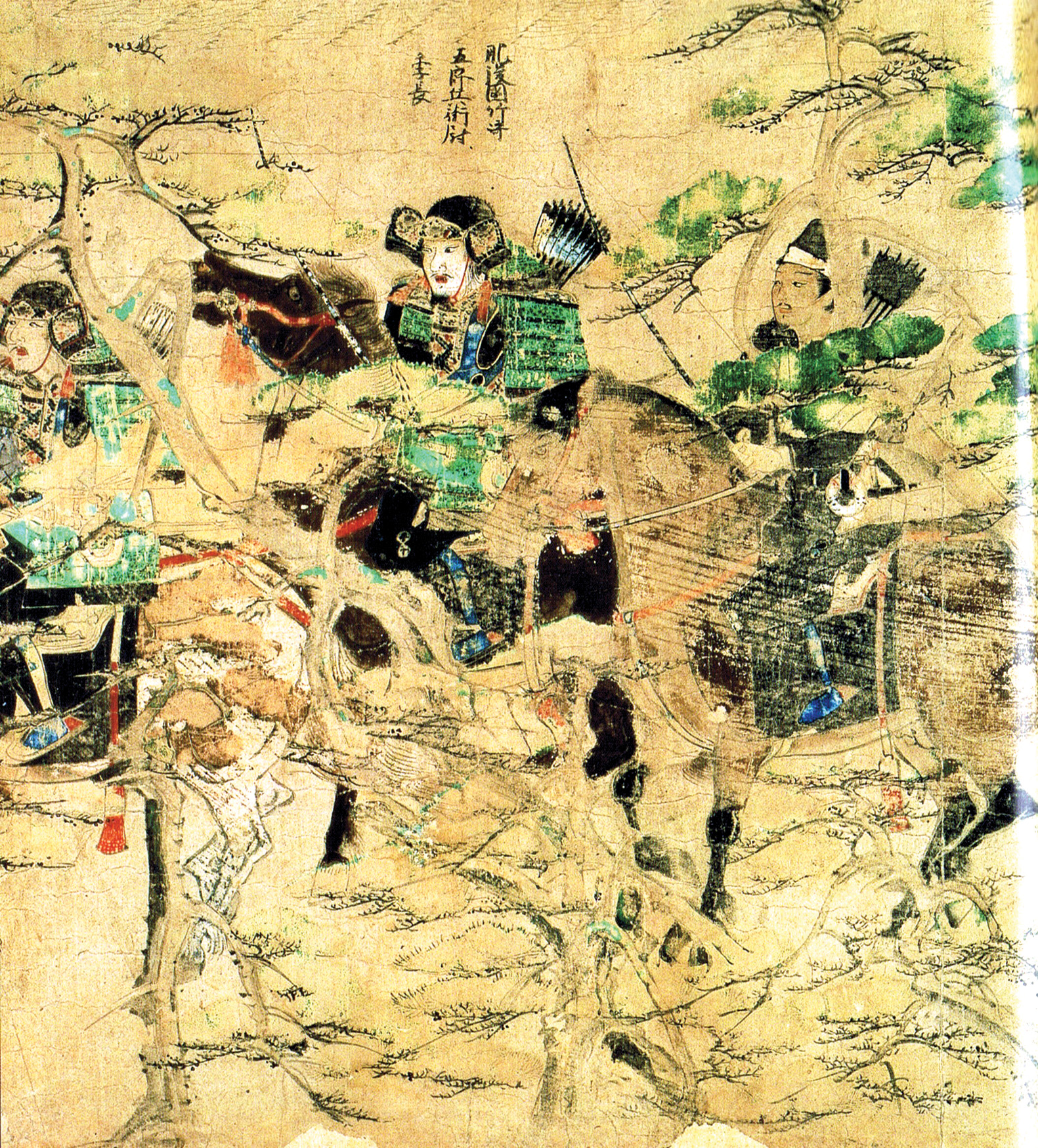
Once they landed on the beach, the Mongols planned to strike eastward along the coast toward Hagata and then turn inland to the provincial capital of Dazaifu. Once they had landed in sufficient numbers, they were confident of victory. Nothing in their battles at Tsushima and Iki had given them cause to be fearful of Japanese military prowess.
The Japanese defense was led by two sugo (military governors), Shoni Tsunesuke and Shimazu Imazu. They were experienced men, but the Japanese had difficulty adapting to Mongol tactics; simply put, the Japanese samurai were highly individualistic, seeking personal honor and glory through individual combat.
In contrast, the Mongols and the Koreans and Chinese they had brought along with them were highly disciplined, as least by 13th-century standards. The Mongols took the high ground, and once it was secured a Mongol general was stationed there to direct operations. They went into battle in large numbers with masses of men protected by rows of shields, and obeyed commands that were issued by drum or cymbal.
The drums and cymbals seemed to have had a psychological as well as command function. Japanese horses were terrified by the noise and became hard to control. The Mongols moved forward vigorously, their blood-red banners waving over their helmeted heads. Mongol armor often consisted of a kind of leather or iron scale-studded coat, very thick. Japanese swords of this period were not the celebrated weapons they were later, and if a samurai struck or jabbed a Mongol or Korean heavy jerkin or coat a certain way, the sword blade might break.
Not content with traditional tactics, the Mongols used poison arrows and employed iron and paper-covered bombs, probably launched by catapults or trebuchets. The Japanese did not know what to make of these weapons because the noise and smoke were almost as bad as the actual explosions.
As always, the Japanese defense was plagued by the glory-hungry nature of samurais during this period—always seeking to gain personal merit and individual rewards. For example, one samurai named Takezaki Suenaga rushed headlong into battle with a handful of retainers. He had been specifically told by commander Kagesaki not to join the fighting until the Mongols advanced. It was an order that Suenaga characteristically ignored.
Kagesaki did not want Suenaga to advance because the ground just ahead had mudflats and was treacherous for horses. The headstrong samurai would have to find out for himself. The ground was indeed soft, and while Suenaga and four or five retainers tried to negotiate through the viscous muck they were hit by a storm of Mongol arrows.
Suenaga’s flag bearer went down, thrown from his horse when the animal was badly wounded by an arrow. Within minutes Suenaga and his remaining retainers were also wounded. The rash samurai and his followers were saved by a Japanese sortie, but the situation remained fluid.
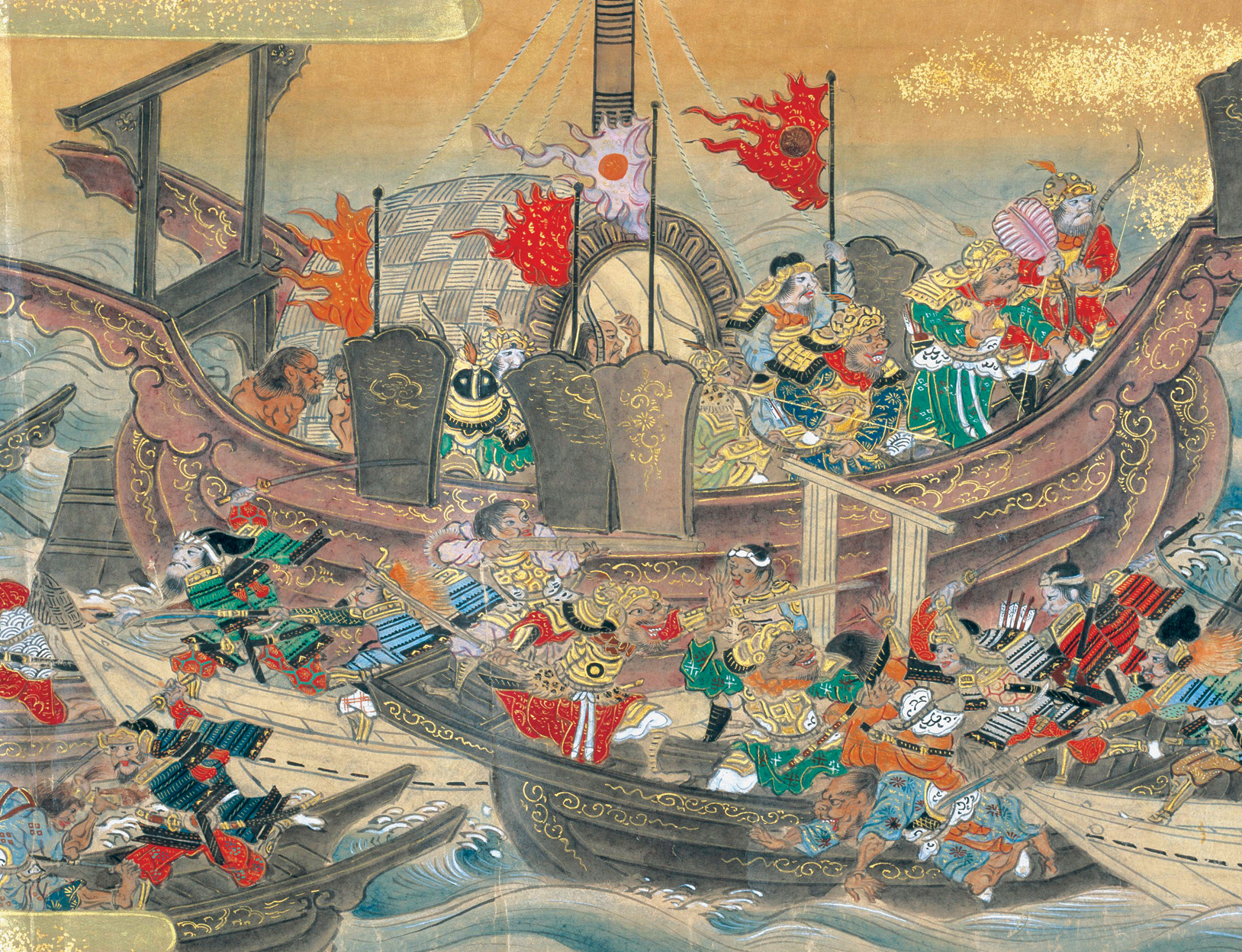
By dusk the Japanese had been pushed back several miles, and its seemed nothing could withstand the Mongol onslaught. The Japanese decided to make a stand at Mizuki (water castle), essentially an earthwork with a moat. It was designed to slow an enemy invasion from the beach but had yet to be tested in a real emergency.
If Mizuki was taken, the Mongols would probably seize the regional capital at Dazaifu just beyond. Things looked grave, but just then Liu Fuxiang, one of the Mongol commanders, was shot in the face by an arrow launched by Kagesaki himself. Liu was not killed, but the troops under his command were withdrawn soon after.
The rest of the Mongol forces were still in a position to make life difficult for the Japanese. Night was falling, but the Mongols still had a fairly good beachhead established on Japanese soil. Inexplicably, they did not spend the night on shore but withdrew to their ships.
Expedition commander Hol Don was strangely overcautious for a fierce Mongol warrior. He wanted to break off the fighting and sail back to Koryo (Korea). Ironically, it was a Korean general, Kim Bong Gyong, who showed more mettle than the conquerors of his country. “Our forces are small in number, true,” he said, “but they are already on the enemy’s land. Let’s fight it out.”
But the Mongol general prevailed, and the expedition raised anchor and left Japanese shores. Unfortunately, the Mongol ships encountered very rough weather, though apparently not a typhoon. In any event, ships were lost and some thousands—accounts vary—drowned. But it is significant that Hol Don was not punished for his rapid withdrawal. There is circumstantial evidence to suggest the 1274 expedition was more a reconnaissance in force than a full-blown invasion.
The Japanese could hardly believe their eyes when they saw the empty beaches and clear horizon, without a mast or spar in sight. This first Mongol invasion had only lasted a single day, but the Japanese realized they had been lucky. They would start preparations to defend their homeland from a second invasion that was sure to come.
Kublai turned his attention to the subjugation of Song China, but Japan was never far from his thoughts. After the fall of Xiangyang, it was clear that Song China’s days were numbered. The old Song emperor died and was succeeded by the boy emperor Huaizong. The real ruler was the Dowager Empress, who in effect capitulated to Kublai’s rule.
The Mongols took Hangzhou in 1275. It was probably the richest seaport city in the world at that time, boasting a population of over one million souls. In spite of the Dowager Empress’s submission, pockets of resistance stubbornly held out. The end came ironically at sea, where a loyalist Song fleet met a Mongol armada near Yai-shan Island. The Song ships were heavily defeated, and when all hope was lost the Song admiral took the boy emperor and jumped overboard, drowning them both.
Since by then he ruled all of China, the Great Khan could turn his attention to Japan. In a show of diplomatic bravado, he dispatched a special embassy to Kyoto, capital of the Japanese emperor. The Japanese monarch was supposed to come to Kublai to explain the events of 1274. In effect this was another chance at submission, which the Japanese rejected. To underscore the point every man of the Mongol embassy was beheaded.
It took several years of planning and preparation, but by 1281 the great invasion was ready to sail. There were two major components, the Eastern Route Army and the Southern Route Army. Mongol General Hong Da-Gu commanded the 30,000-man Eastern Route forces, which were augmented by General Kim Bang-gyong and his 10,000 Koryo (Korean) troops.
The Southern Route army, a huge force of 100,000 men, was led by Chinese Song General Fan Wenhu. The Southern Route army embarked in China, and the Eastern Route Army departed from Koryo. The 100,000 figure may be an exaggeration, but the Southern Route Army was certainly a powerful force.
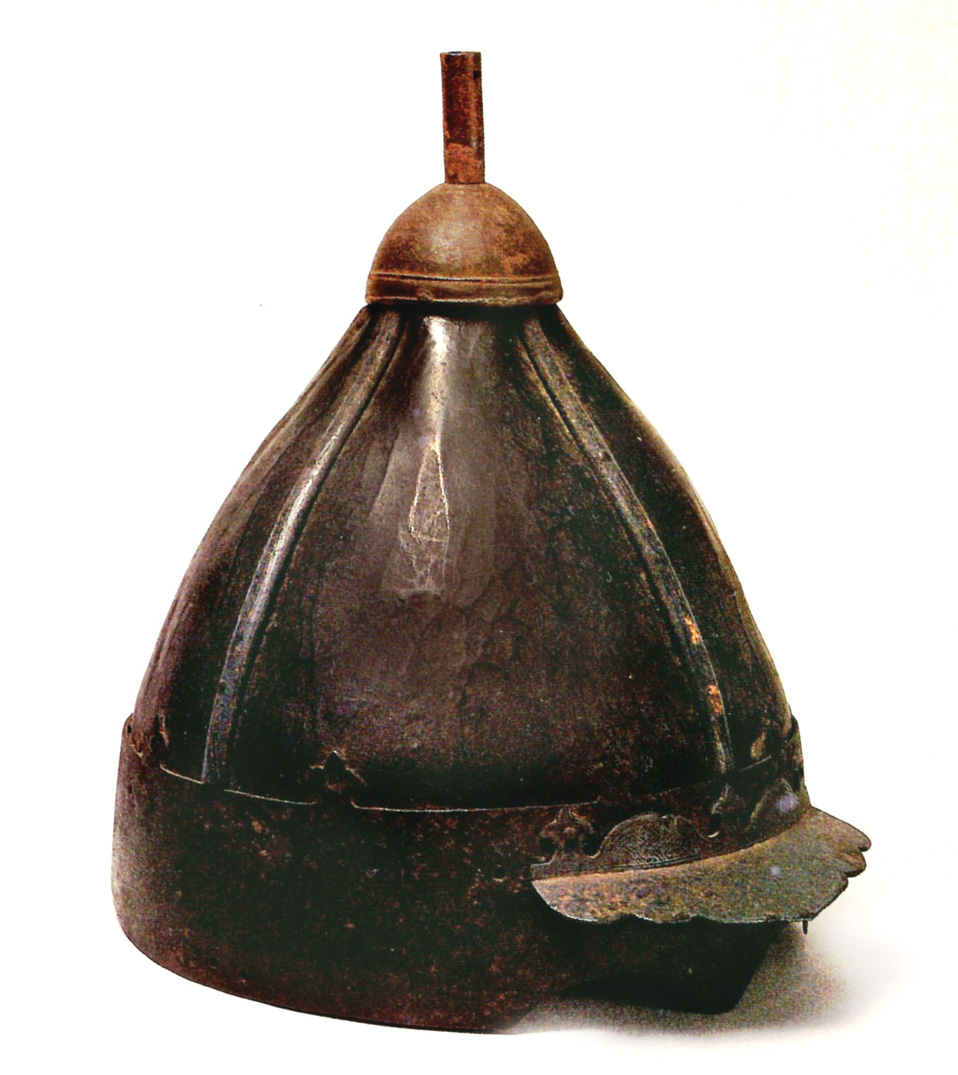
The Eastern Route Army set sail from Koryo on May 22, 1281, but progress was at a snail’s pace. The huge armada did not reach Tsushima until June 9, and Iki until June 14. Details are sketchy, but it seems the occupation of the islands followed the same tragic course as it did in 1274. Hundreds of islanders were slaughtered by the Mongols; at one point, some Japanese civilians hid in caves but were given away by the cries of their children. The refugees were ruthlessly cut down, including the children.
The commanders of the Eastern Route Army, perhaps flush with the success they achieved at Tsushima and Iki, decided to disobey orders and push on. They were supposed to rendezvous with the Southern Route Army on July 2. In retrospect, this was a serious mistake. The Japanese knew the invasion was coming, and only overwhelming force had any chance of success.
The Japanese knew that their best defense was to contain the Mongol forces on the shoreline, thus preventing them from establishing a beachhead. To this end, a series of strong defensive walls were constructed that fronted Hakata Bay. Eventually the segments stretched some 12 miles, and were placed roughly 164 feet, on average, from the sea. The front of the stone walls rose about six feet, and on the other side it sloped down to an earthen embankment up which samurai mounts could be ridden.
The walls were not only defensive, but also offensive. They blocked easy access to the interior, acting as a dam to contain the Mongol flood. They also were platforms and starting points for offensive sorties against the foe. The Mongol Eastern Route Army divided its forces as it approached the Japanese coast. Three hundred ships went eastward to the province of Nagato, on the home island of Honshu. There was some panic on Honshu because some thought that the appearance of the Mongols there meant that Kyushu had already fallen.
Luckily, the Nagato samurai easily repulsed the Mongol raiders, and the panic was nipped in the bud. Beaten, the Mongol force rejoined their comrades back at Hakata Bay on Kyushu. While they were away, the Hakata Bay contingent had failed miserably in trying to land troops there. The walls had done their job well, serving as a platform from which both mounted samurai and foot archers could launch clouds of deadly arrows.
Frustrated in their attempts to establish a beachhead, the Mongols seized Shugo and Noko Islands in the bay. The Japanese decided to take the fight to the enemy by raiding the great Mongol ships that were anchored in the bay. Swarms of smaller Japanese craft attacked the great Mongol vessels like sharks nipping at the flanks of whales. Grappling hooks and ropes allowed the samurai to board, and the melee was bloody.
The samurai may have gained great personal honor on these raids and maybe even collected a few trophy heads, but the Mongol fleet was simply too large to make a decisive difference. To ward off these attacks, many Mongol ships were literally tied together side by side with thick ropes. Once each vessel was secured, wooden planks were laid from ship to ship, bridges to let Mongol soldiers pass freely from point to point in case of attack.
The Japanese had fervently hoped that the kami, the gods, would come to their aid. On August 14 a typhoon named kamikaze, or “divine wind,” struck the area with a terrible fury. Some accounts say the Korean sailors with the fleet, accustomed to these waters, tried to warn the Mongol commanders beforehand, but few took heed.
It was said that at least some Korean troops managed to get back to their ships, which escaped before the main part of the storm arrived. Most ships were not so lucky. Huge wind-lashed waves smashed into hulls, sending them to the bottom, and howling gales masked the sounds of splintering wood and the cries of drowning men. Ironically, so many ships were tied together it was harder for single vessels to escape the heavy seas. Whole groups were driven by the winds to the shore, where they were wrecked in the shallows by jagged rocks.
After the storm abated, the bay and its immediate waters were strewn with wreckage and the bodies of drowned Mongol, Chinese, and Korean soldiers. Hundreds, if not thousands, of waterlogged survivors did manage to reach land only to be slaughtered by samurai and their retainers. It was said that Koreans and Mongols were killed without mercy, but Song Chinese were spared and made slaves.
Mongol losses will never be fully known. Korean accounts indicate that of the 26,989 Koreans that sailed with the Eastern Route Army, 7,592 did not return. Overall estimates place Mongol losses in the 1281 invasion at somewhere between 60 to 90 percent. The Great Khan was unfazed, at least officially, and plans were made to mount a third invasion, but it never took place.
The failed invasions of Japan mark the limit of Mongol expansion. Kublai sent his armies south, hoping to conquer Annam and Vietnam. The climate and terrain were not suitable to Mongol tactics, and these expeditions ended in failure. By the 1290s, the Great Khan was an old man, grossly overweight from rich banquets and plagued by gout and rheumatism. Kublai died in 1294.
As the centuries passed, the legend of the kamikaze grew, as did the myth of Japan’s invulnerability to invaders. In the later stages of World War II, young suicide pilots, also named kamikaze, deliberately crashed their planes into American warships. This time, the magic of the divine winds, man-made or natural, did not work. Ironically, Japan surrendered to the Allies in August 1945, 664 years almost to the day from the failed Mongol invasion.
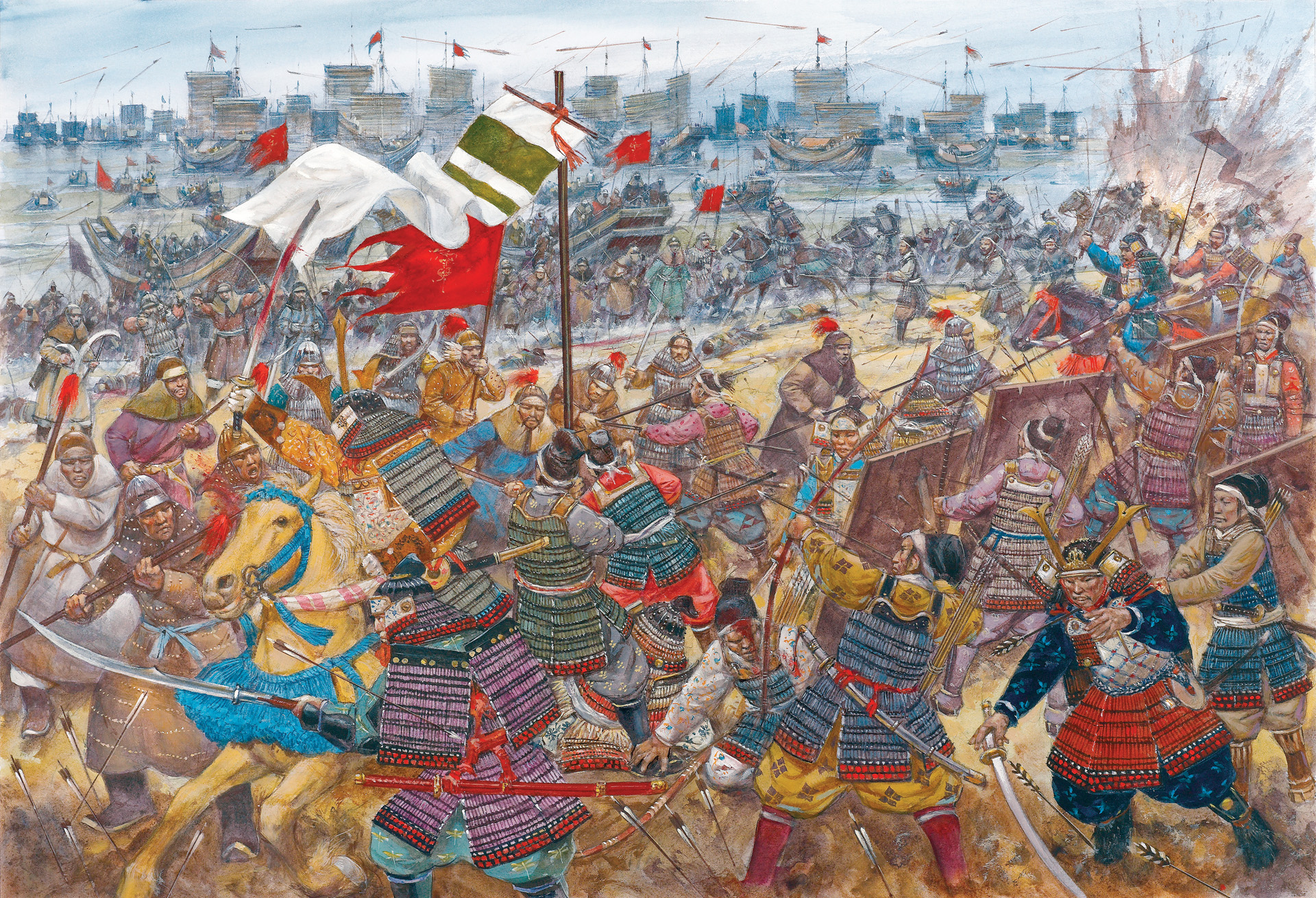
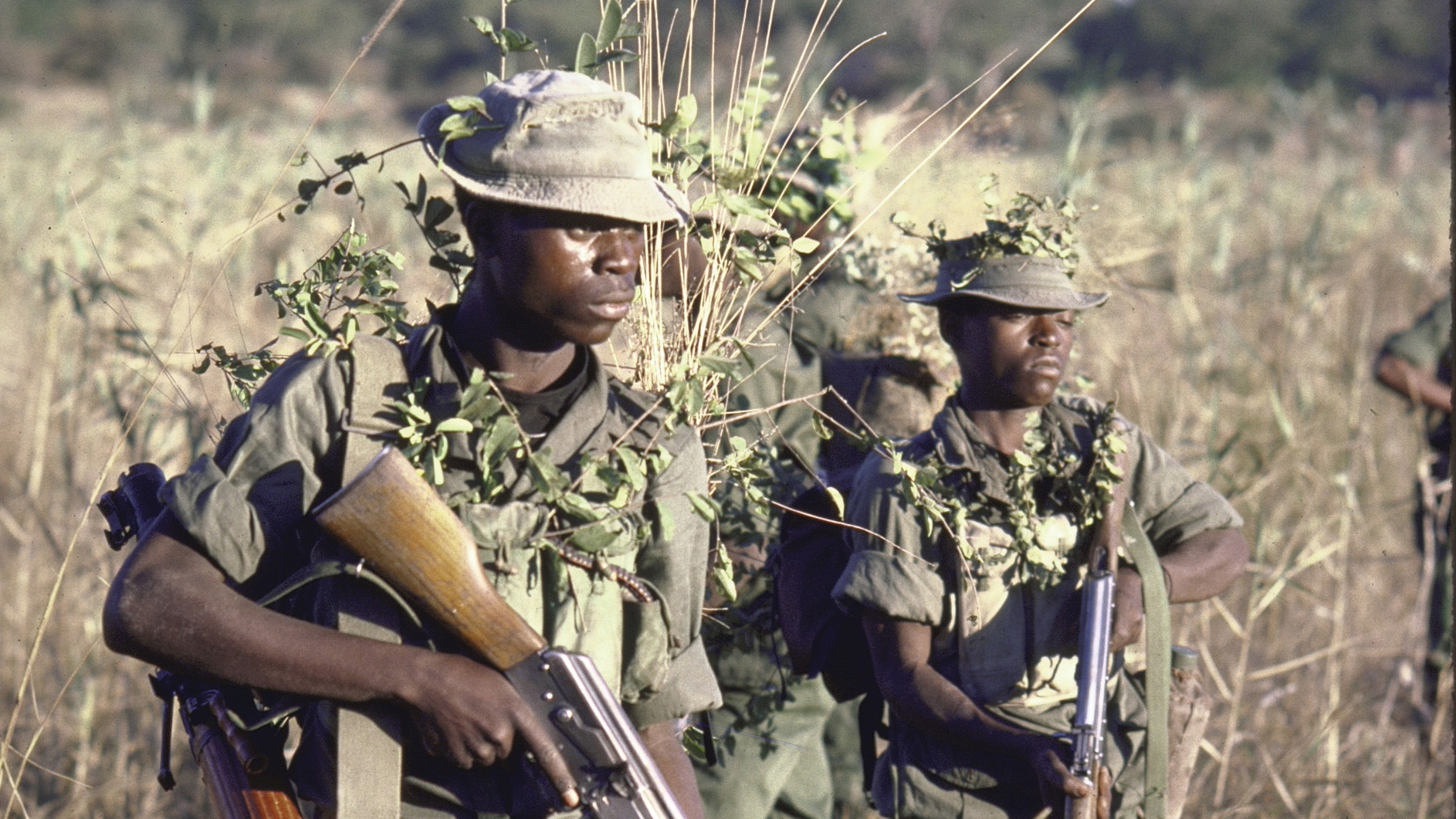
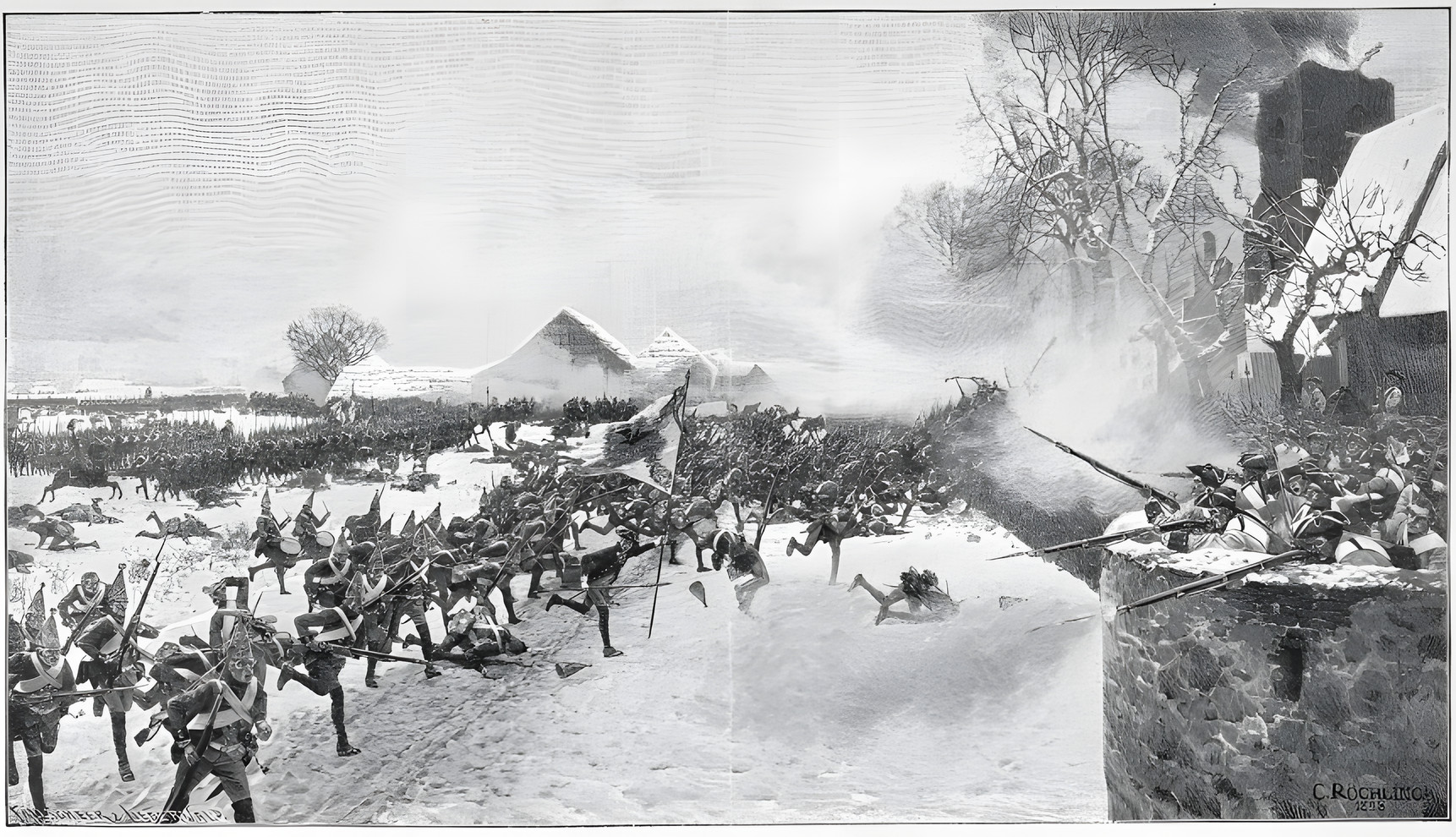


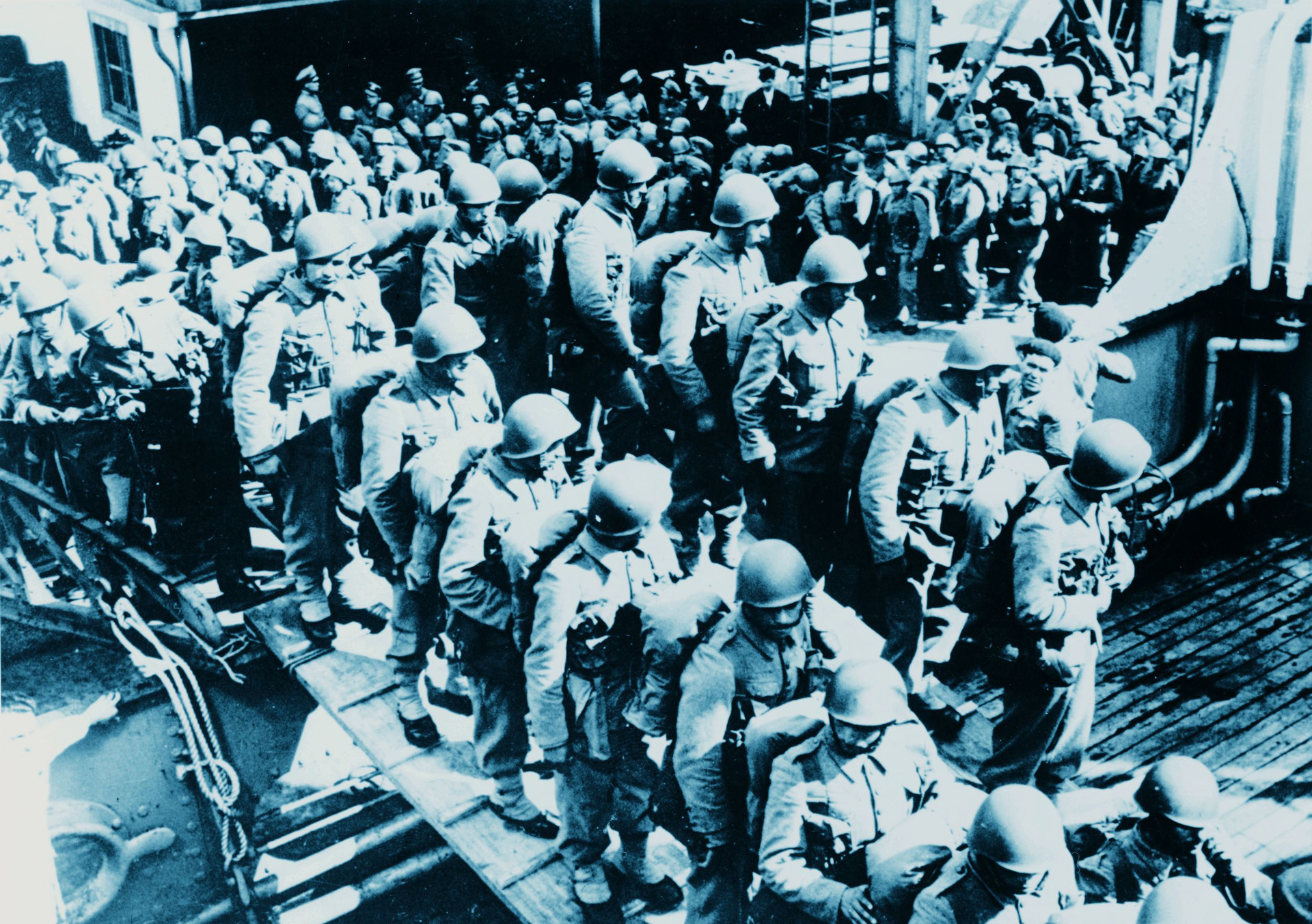
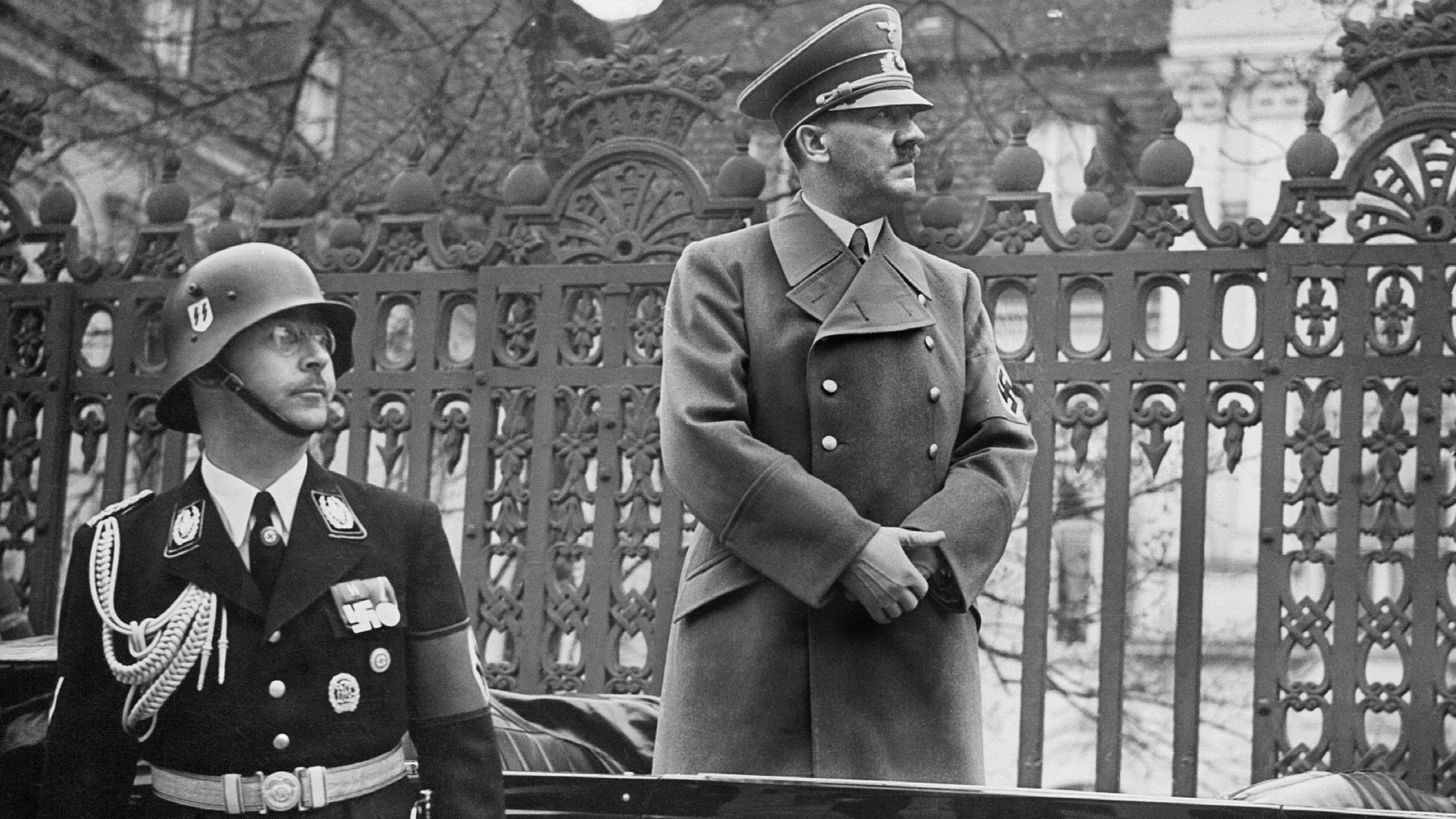
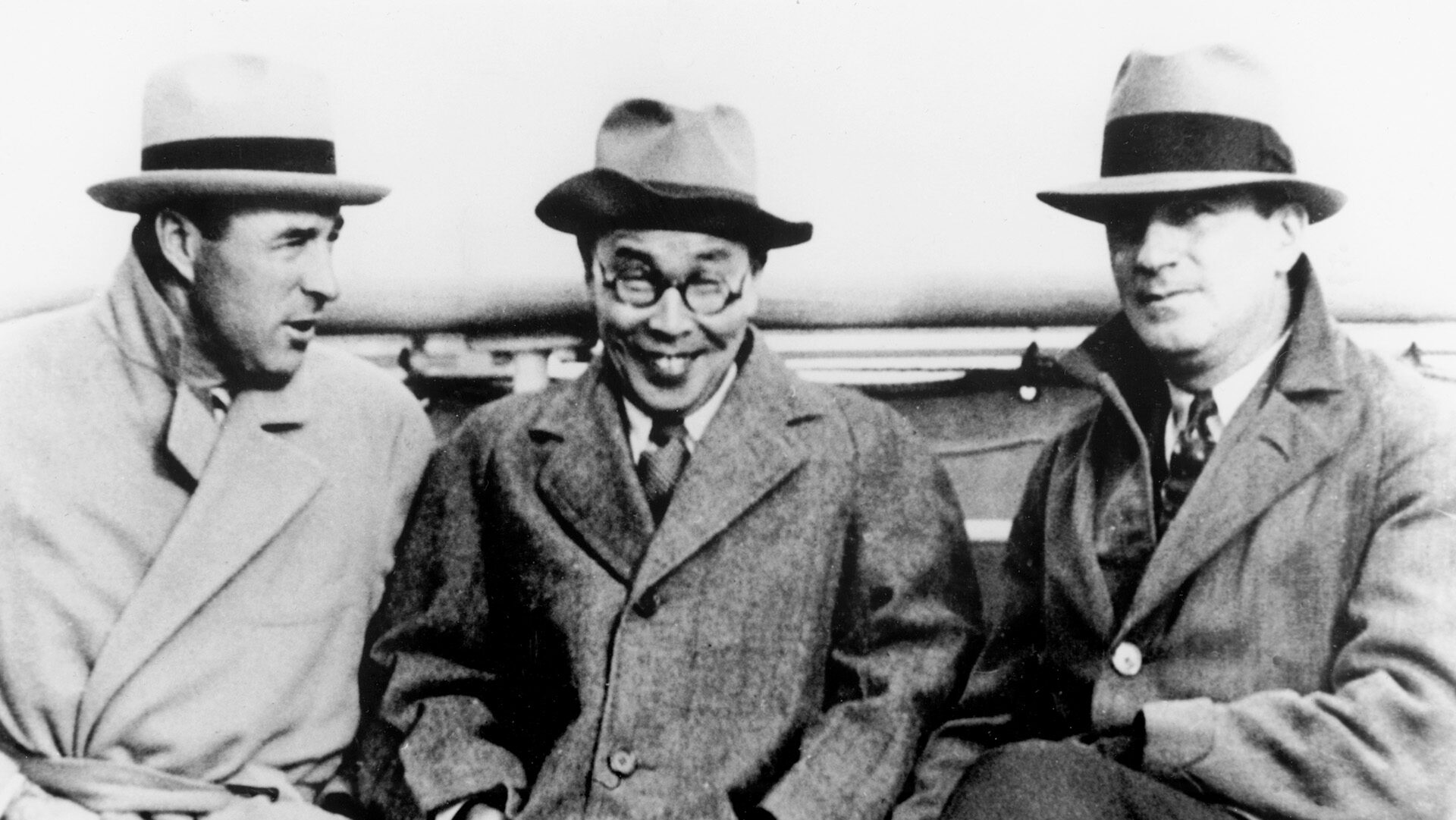
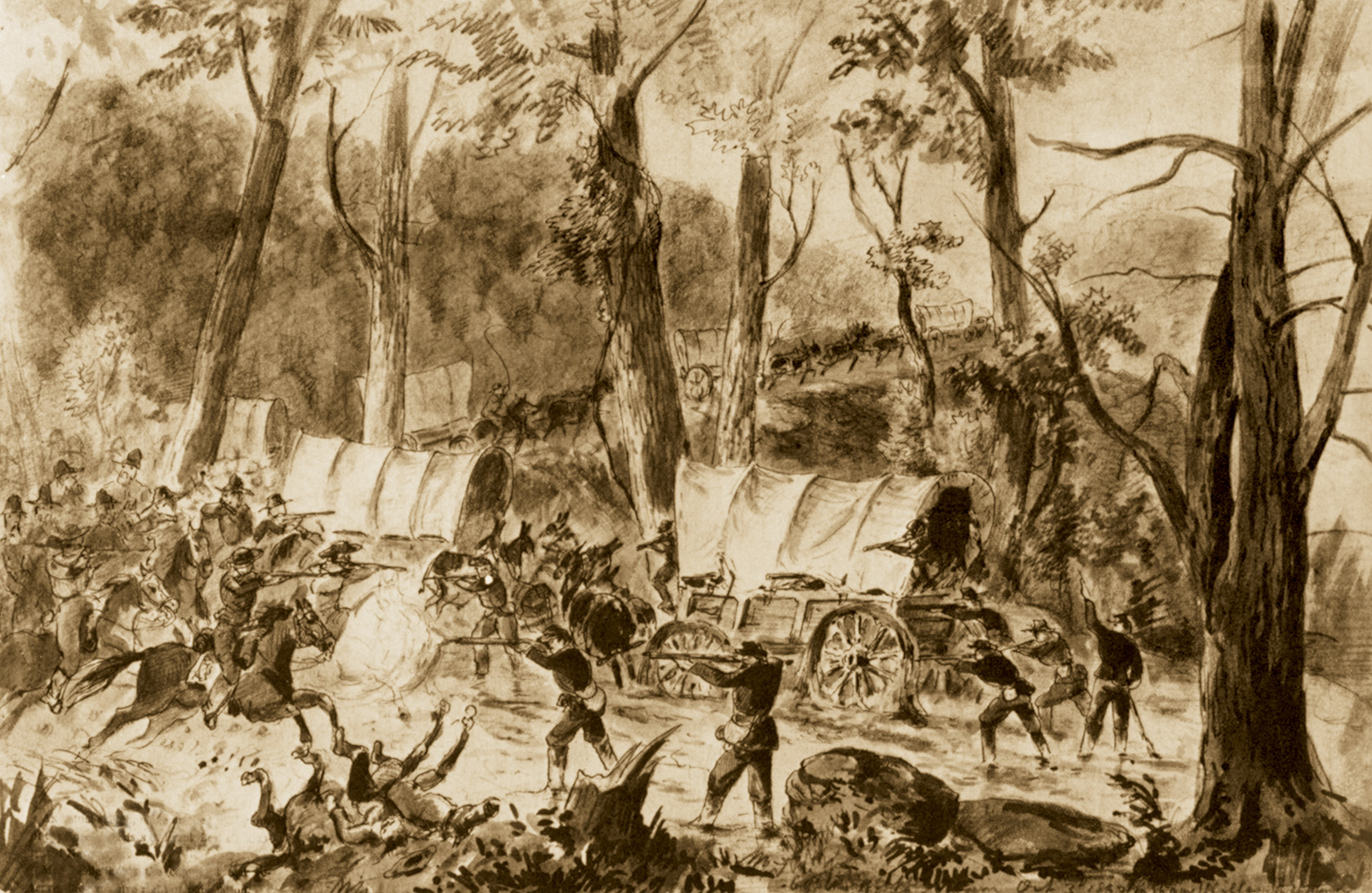
Join The Conversation
Comments
View All Comments